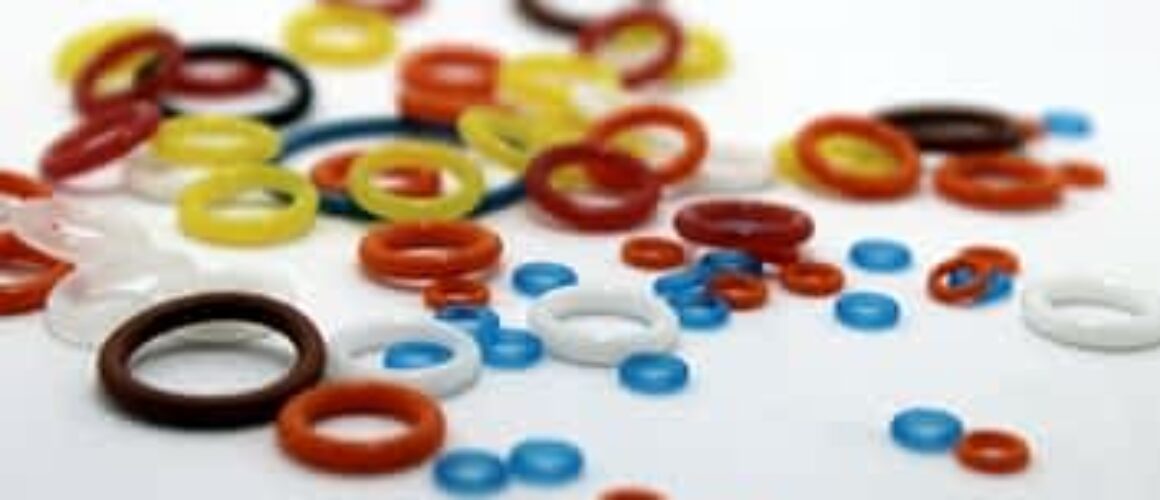5 Most Suitable Materials For High-Temperature Sealing Applications !!!
Industrial Rubber Seals are designed to prevent leakage, while helping to combine systems or mechanisms together. While seals created for ambient and low temperatures are not extremely difficult, creating seals for high temperature applications is a challenge. This is because standard sealing materials cannot perform well in such conditions for long periods of time. As excessive heat can gradually degrade rubber materials, leading to deteriorating performance and premature failure. This can result in leakage & high-temperature applications require high-temperature-resistant rubber products that offer dependable performance no matter what. Hence, it is important to choose the right manufacturing materials to ensure prolonged seal performance in high temperature applications.
Applications with high temperatures can include ethylene production, steam and gas turbines, solid oxide fuel cells, and industrial exhaust systems. Such applications comprise immense levels of heat, aggressive chemicals, and strong transfer fluids. Due to these elements, the temperatures can be of at least 400⁰F or above. Traditional sealing materials like mica or graphite lose their physical integrity, and their performance diminishes quickly in such environments. This can result in total leakage, which can lead to a shutdown, and downtime.
Silicone Rubber
A rubber-like polymer, Silicone Rubber has a high temperature resistance up to 230⁰. It offers outstanding high-temperature resistance, with some compounds able to withstand temperatures up to 305 °C. The material is resistant to UV rays, ozone, and oxygen. It has great electrical insulation properties, and high gas permeability. It is mainly used to manufacture aerospace seals, and automobile gaskets.
Silicone is not a high strength material and tears easily. Having said that, we have special compound grades that deliver better tear resistance than standard silicone. Fluorosilicone elastomer material combines high liquid resistance of fluorocarbon, and extreme temperature stability of silicone. With a temperature above 400⁰F, fluorosilicone O-rings can be exposed to sunlight, and will not degrade due to air, ozone, aromatic, or chlorinated hydrocarbons.
PTFE
Polytetrafluoroethylene is one of the reliable polymer materials. It can resist strong industrial chemicals, and maintain its integrity in temperatures above 500⁰F for long time periods.PTFE provides the least amount of friction when compared to other options. In addition, PTFE is tremendously nonwetting and acts as an excellent electrical insulator. PTFE is also unfazed by the majority of chemicals. It is extremely resistant to high temperatures, contain outstanding electrical properties, have excellent release surfaces and superior chemical resistance. PTFE is widely used across various industrial applications like Plumbing, HVAC, Electronic Appliances, Pharmaceutical, Automotive & many more.
FKM (Viton)
FKM is a family of fluoroelastomers commonly referred to by DuPont’s Viton® brand name. FKM is an excellent high-temperature-resistant rubber that can resist the temperature above, which retains its good mechanical properties and chemical resistance (oils, fuels, lubricants and most mineral acids), even at extremely high temperature up to 225⁰F. Due to its wide temperature range, chemical compatibility, low compression set, and excellent aging characteristics, fluorocarbon elastomers (FPM, Viton®) have grown to major importance in the seal industry. Fluorocarbon elastomers are highly fluorinated carbon-based polymers used in applications to resist harsh chemical and ozone attack. Fluorocarbon O-ringsshould be considered for use in aircraft, automobile and other mechanical devices requiring maximum resistance to elevated temperatures and to many fluids such as mineral oils and greases, non-flammable hydraulic fluids, silicone oil, fuels etc. Whilst not recommended for use with brake fluids, ammonia solvents, strong acids or superheated steam.
EPDM
EPDM – also known as ethylene propylene diene monomer – is an extremely versatile material used in a variety of applications, from automotive products to HVAC parts. This type of rubber also acts as a less expensive alternative to silicone, as it can endure weather conditions, abrasion, and other challenges for long periods of time with proper use. EPDMis a copolymer of ethylene, propylene and diene monomers. This synthetic high-temperature-resistant rubber offers excellent heat resistance, performing optimally up to +150°C. It has good resistance to UV exposure, ozone, aging, weathering, and many chemicals – great for outdoor applications. Can be fabricated in a variety of ways, which includes custom molded and extruded partsLong-term part lifespan allows for fewer replacement parts, saving money in the long run.
Also Read: What Are The Advantages Of EPDM O Rings?
HNBR
HNBR elastomers are changing the game for sealing and manufacturing companies. Made from hydrogenated acrylonitrile butadiene rubber (NBR), the compound meets higher temperatures, retains better resistance and has become widely known for its physical strength. It is a unique elastomer that is derived from conventional nitrile rubber through the hydrogenation of unsaturated bonds in the butadiene. HNBR is an exceptionally high-temperature-resistant rubber that can withstand much higher temperatures than conventional nitrile up to +150 °C. It also offers good abrasion resistance. It is resistant to mineral oil-based hydraulic fluids, animal and vegetable fats, diesel fuel, ozone, sour gas, dilute acids and bases. HNBR also resists new bio-oils (biological oils). Typical applications include gaskets and seals, especially for the oil and gas industry, and accumulator bladders, and diaphragms. It is compatible with automotive oils, gases and fuels such as aliphatic hydrocarbons, hydraulic fluids and dilute acids. However, HNBR is not recommended for use with chlorinated hydrocarbons, polar solvents or strong acids. Also note that it has limited resistance to brake fluids.


